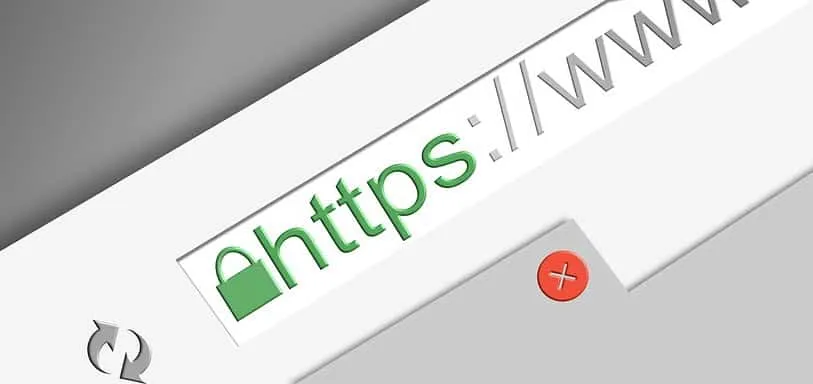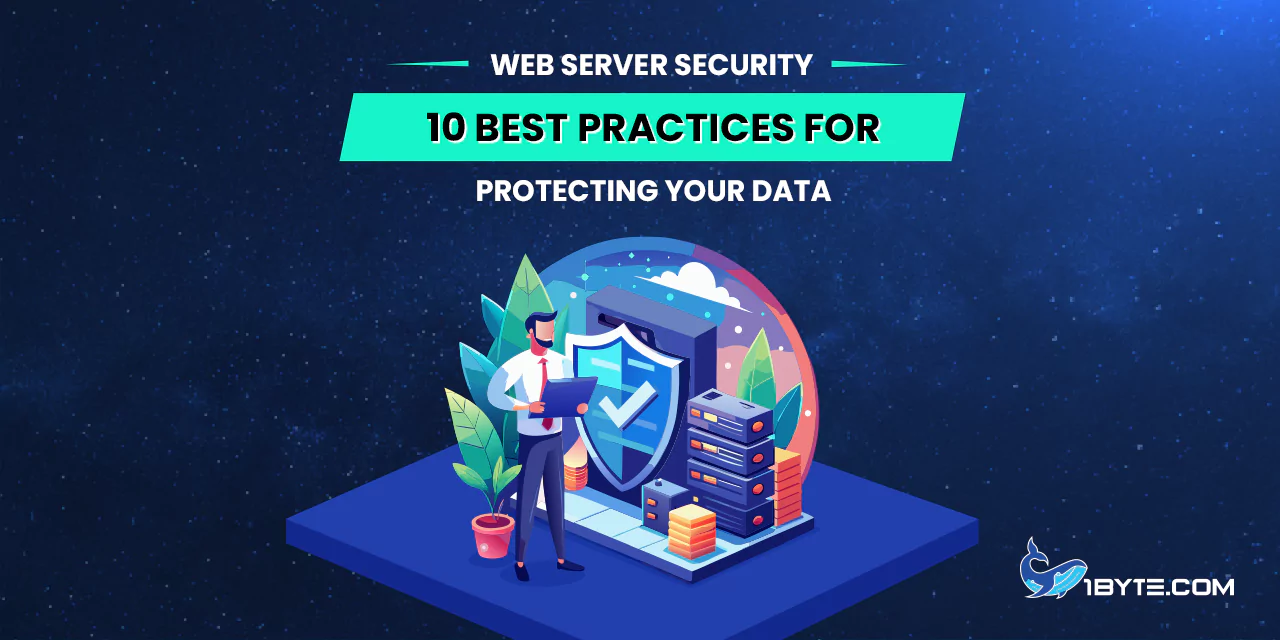In today’s digital age, web server security is more critical than ever. As cyberattacks rise, it is important for you to protect your web server and the data that it stores. This article from 1Byte explores 10 best practices to safeguard your web server, backed by recent statistics and expert insights.
The Importance of Web Server Security
Web server security is crucial for protecting sensitive data and maintaining online services. Businesses of all sizes are at risk and cyberattacks are becoming more sophisticated. By 2024, they project that data breaches will cost businesses more than $2 trillion in lost revenue. This highlights the urgent need for robust web server security measures.
Data privacy, integrity and availability are maintained with a secure web server. It stops unauthorized access, data breaches and service disruptions. For instance, in 2021, the Internet Crime Complaint Center (IC3) received more than 28,500 complaints regarding COVID 19 and losses over $4.1 billion. The bottom line shows the cost of cyberattacks and why organizations should protect their web servers.

Implementing strong web server security practices can mitigate these risks. General practice requires regular software updates, strong passwords and encryption. To another hand, the use of tools like vulnerability scanners can help discover and correct security flaws. By prioritizing web server security, businesses can protect their data and maintain their reputation.
For more detailed information, you can refer to the OWASP Top 10:2021 report.
FURTHER READING: |
| 1. Understanding Risks and Solutions for Virtualization Security |
| 2. 10 Essential Practices for Ensuring Cloud Web Security |
| 3. What Is DMCA and What Does It Mean? |
Top 10 Practices for Web Server Security
In today’s digital age, web server security is more critical than ever. Since 2022, the number of cyberattacks on web servers has risen 30%, as per recent reports. Web servers must be protected from sensitive data to ensure your online presence. This section outlines the top 10 best practices for web server security, backed by industry reports and real-world examples.
Keep Software Updated
Keeping software updated is crucial for web server security. Cybercriminals know that the most vulnerable software is not being updated. Vulnerable and out-of-date components are so risky that it is on the OWASP Top 10 list. In fact, 90 percent of applications tested had some type of security misconfiguration.
These vulnerabilities are patched regularly, and it decreases your risk of being attacked. As an example, according to the 2021 Webroot Brightcloud Threat Report, 86 percent of malware is unique to one machine that helps prove making sure your software is updated is crucial.

To add to that, Sucuri found that outdated software is one of the most common issues on hacked websites. Having software updated will help to keep your web server from getting brute forced in the first place.
In summary, regular updates are a simple yet effective way to enhance web server security. Keep yourself and the components of your software up to date to protect your data.
Use Strong Passwords
Web server security starts with strong passwords. In the report Bluehost has stated that passwords should have 8 characters or more with a mix of uppercase and lowercase letters followed by numbers and special characters. Don’t use personal information such as birthdays or pet names.
CloudPanel performed a study that shows that password managers make strong passwords as they help to generate and store them securely. It prevents password reuse and makes password managing easier.
And in 2021, over 28,500 complaints about COVID-19 related issues were reported to the FBI’s Internet Crime Complaint Center (IC3), making a strong password a mandate. Verizon 2021 Data Breach Investigations Report found that 86% of breaches were financially motivated, which means we have to keep our data safe by strong passwords.
By following these practices, you can significantly enhance your web server security and protect your data from cyber threats.
Implement SSL/TLS
SSL/TLS (Secure Sockets Layer/Transport Layer Security) is crucial for web server security. Enabling clients and web servers to communicate in a way that data is both confidential and integrity protected. F5 Labs reports that since 2021, TLS 1.3 has become the most used protocol by 63 percent of the top one million web servers. It provides better security and performance than its predecessors do.
To ensure you regularly implement SSL/TLS correctly, consider choosing one if not more Reliable Certificate Authority (CA). Invest in a reliable CA to issue your SSL/TLS certificate. It ensures trust worthiness and industry standards from compliance.
On your server generate a Certificate Signing Request (CSR) which includes your public key and the domain details. Submit the CSR to the CA. It is the CA who checks your identity with a trusted certificate.
Enable HTTPS on your web server which requires that you install the issued certificate. Set strong protocols and ciphers. Make sure your server only supports TLS 1.3 and or strong ciphers. Turn off old protocols, such as SSLv3.
Use HTTP Strict Transport Security (HSTS) to ensure that connections are always secure, and to prevent downgrade attacks. To prevent protocol downgrade, use TLS Fallback SCSV. All resources (images, scripts, etc), should be loaded over HTTPS, otherwise there’ll be a warning of mixed content.
Update your SSL/TLS configuration and monitor this regularly to address new vulnerabilities.
These web server security practices will all help to improve the security of your web server while safeguarding sensitive data from any possible threats.
Configure Firewalls
Proper firewall configuration is crucial for web server security. Over the past year, 99% of all firewall breaches were misconfigurations, Fortinet recently reported. The above shows the need to set up firewalls correctly to lock down your data.
Start by updating the firewall firmware to the latest version. Remove default users or disable the ability to create default user accounts, and change default passwords. Always use strong, unique passwords and never using shared user accounts. For instance, if more than a single administrator can manage the firewall, create accounts with restricted privileges according to the responsibilities.
Next, identify network assets and resources that need to be protected. Through Firewall Zones, IP Address Structure. Zone assets based on certain function and risk level characteristics of the corporation. For instance, you might put the web servers out in a demilitarized zone or DMZ and make the related inbound traffic limited.
Additionally, there are ACLs that can set up ACLs to allow or disable traffic between network zones. The rules should define what traffic should be allowed or blocked, controlled by IP addresses, ports, and protocols.
Finally, configure other firewall services and logging. You can log network traffic to monitor network traffic and detect threats. Use the firewall to configure standard and additional services such as stateful packet inspection and intrusion detection systems (IDS).
By following these steps, you can enhance your web server security and protect your data from cyber threats. For more detail, see Fortinet’s configuration of a firewall report.
Monitor Server Logs
Regularly monitoring server logs is crucial for maintaining web server security. Server logs help administrators to detect and respond to possible threats early in time. A report by OWASP states 90 percent of applications tested had security misconfiguration, therefore it’s crucial to watch out for security misconfiguration. There are several related key practices:
- Turn on logging for what you’re doing on the server, access logs, error logs, security logs.
- Keep regular server logs reviews and spot any unusual or notable activity. In fact, many of these processes can be automated.
- For example, you can configure alerts for specific events like multiple failed login attempts or unusual traffic patterns.
- Often there are patterns in the logs you can look for that could point at a security breach; for example, repeated access attempts by IPs you don’t recognize.
- Implement log management tools, centralize and analyze the log data of multiple servers.
By following these practices, organizations can enhance their web server security and protect sensitive data from potential threats. Check the OWASP Web Security Testing Guide for more details.
Secure SSH Access
Securing SSH access is crucial for protecting your web server from unauthorized access and potential attacks. Here are some best practices to ensure your SSH access is secure:
- Use Strong Authentication: Require especially strong passwords, and require two-factor authentication (2FA). It’s an extra layer of security because it requires another form of identification, like a fingerprint or code texted to your mobile phone.
- Manage SSH Keys: Instead use public key based authentication. Use ED25519 or RSA-4096 secure key to generate SSH keys. Ensure that these keys are regularly updated and rotated to maintain security.
- Disable Root Login: Prevent direct access to the highest level of privileges by disabling root user login. Prevent the sudo command to allow only specific users to login as the root.
- Change Default SSH Port: Change your standard SSH port (22) from being a default port to avoid the automated attacks. It makes things much less obvious.
- Implement Firewalls and Network Segmentation: Deny access to the SSH server by using firewalls. By implementing network segmentation, this will isolate the SSH server from the rest of the network.
- Monitor and Audit SSH Activity: Audit and scan for SSH activity and detect any suspicious SSH activity on a regular basis. Keeping track of how many times and which profile is being used takes the form of implementation of logging.
- Use SSH Bastion Hosts: Use SSH bastion hosts enable you to have control and monitor access to your servers. It’s safe remote access by providing a secure gateway as well.
- Rate Limiting and Account Lockouts: Filter unwanted IP addresses with a rate limiting filter. Make sure account lockouts occur after a certain number of failed login attempts against a single account in order to deter attackers.
While following these best practices you can limit the risks of vulnerable SSH access to your web server.
Regular Backups
Regular backups are a cornerstone of web server security. This means that they protect you from loss of your data due to hacked attempts, server breaking down, accidental deletions and other software conflicts. HostThrive recommended that you must take regular backups to protect your data and get the data back fast in case of errors.

In Q2 2023, Cloudflare stopped an average of 112 billion cyber threats per day — a figure they revealed in a recent study. It goes to show that you really need to have a good backup strategy in case something does happen. This also means a regular backup means you can migrate your website easily and comply with data protection regulations.
For example, a company that has a recent backup and managed to get past the ransomware attack was able to quickly restore its data. It minimized downtime and saved from significant financial loss. Regular backups ensure your precious data is safe and intact.
To learn more about the importance of regular backups, you can read the complete guide by HostMiner on The Importance of Regular Backups for Your Website.
Assuring continuity of business even in the unlikely event that an unexpected event strikes, you can do it by prioritizing regular backups to your web server.
Use Web Application Firewalls (WAF)
Web Application Firewalls (WAFs) are essential for web server security. They watch, filter and block malicious traffic to defend apps against common threats such as cross site scripting (XSS) and SQL injection. As a critical defense for websites, mobile applications and APIs, WAFs are the focus of a report by Cisco.
Inspection HTTP requests, inspecting them based on defined rules to find and reject malicious traffic is what WAFs do. This keeps data breaches from happening and helps you stay secure in line with security standards such as the Payment Card Industry Data Security Standard (PCI DSS). For instance, the WAF may be activated immediately by Cloudflare to perform rate limiting in the event of a DDoS attack, which adds another layer of security.
Implementing a WAF significantly enhances web server security by adding an extra layer of defense against web-based attacks. The purpose of a WAF is to provide sensitive data with protection and preserve the integrity of the web applications.
Limit User Permissions
Limiting user permissions is a crucial practice in web server security. This means by restricting sensitive data and functionalities access, you will substantially lower the risk of unauthorized access and data breaches.
Look to only grant users that level of permissions that they need to perform a task, not giving read, write, or execute permissions where they don’t need them. To minimize risks, separate different roles and responsibilities out into separate user accounts. Look at user permissions regularly to revise when possible, if appropriate.
Define first roles, and then assign permissions to these roles. This eliminates the need to manage permissions for user, stream and playlist user, reducing complexity from that perspective. In addition, analyzing user activity and access logs can serve to detect unusual or unauthorized behavior.
For more details see the Microsoft Learn article on security authorization.
Conduct Regular Security Audits
Regular security audits are crucial for maintaining web server security. They are used to find a way to expose vulnerabilities and the up to date state of security measures. According to IBM, it took an average of 206 days to identify a breach in 2019. Proactive security measures are highlighted by this.
The first step into conducting a thorough security audit of your website and server is to scan it for possible weaknesses. That means checking core software, extensions, themes, server settings, SSL connections, and configurations. Once vulnerabilities are found, then do penetration tests to see what the risk associated with those vulnerabilities is.
Regular audits can find outdated software, misconfiguration and other security issue that hacker might exploit. As an example, SiteLock found that in particular, many sites are vulnerable to cyber threats because of outdated software and lack of proper configurations. Regularly auditing your web server, and ensuring it is secure, and falls in line with industry standards, can be done.
These days, incorporating such practices into your routine will lessen you from getting yourself into trouble related to data breaches and cyberattacks.
Leverage 1Byte’s strong cloud computing expertise to boost your business in a big way
1Byte provides complete domain registration services that include dedicated support staff, educated customer care, reasonable costs, as well as a domain price search tool.
Elevate your online security with 1Byte's SSL Service. Unparalleled protection, seamless integration, and peace of mind for your digital journey.
No matter the cloud server package you pick, you can rely on 1Byte for dependability, privacy, security, and a stress-free experience that is essential for successful businesses.
Choosing us as your shared hosting provider allows you to get excellent value for your money while enjoying the same level of quality and functionality as more expensive options.
Through highly flexible programs, 1Byte's cutting-edge cloud hosting gives great solutions to small and medium-sized businesses faster, more securely, and at reduced costs.
Stay ahead of the competition with 1Byte's innovative WordPress hosting services. Our feature-rich plans and unmatched reliability ensure your website stands out and delivers an unforgettable user experience.
As an official AWS Partner, one of our primary responsibilities is to assist businesses in modernizing their operations and make the most of their journeys to the cloud with AWS.
Conclusion
To conclude, web server security is essential for safeguarding your data and maintaining your online presence. If you follow all the best practices mentioned, it will immensely decrease the risk of cyber attacks and data breaches. A few small, but effective, things do make a difference: Strong passwords, regular updates, strong firewalls, and so on.

